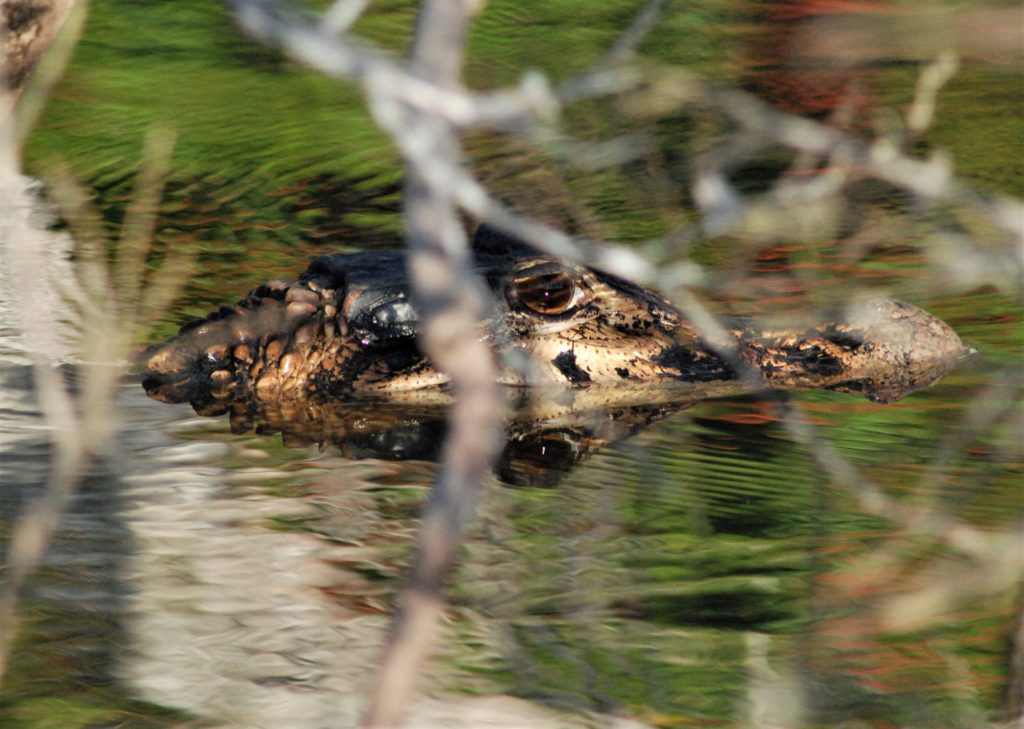It’s difficult to find wildlife in tropical forests, even in the best of circumstances – and many of the world’s tropical forests have been emptied of their wildlife and diversity by hunting or contamination.

Manu National Park, in Peru’s South-Eastern Amazon is a wonderful exception, one of the most beautiful biodiverse regions on the planet. I’d been to Manu many times – lived their with an Indigenous Community for a while, but never failed to be enchanted by it’s magic – Golden sunsets reflected in the river, the sight of red and green macaws calling noisily to one another as they headed back to their roosts for the night, the roar of Howler Monkeys echoing through the forest at dawn… But for me Manu saved her most memorable wildlife experience for last.


I had returned to do a study for my MSc in Conservation Ecology, and when my Study was completed I met with my wife, Gabi and headed up the Manu river in a dugout canoe for one more adventure. We were headed for Cocha Salvador, a beautiful oxbow lake several hours upstream. Every turn in the river brought new sights – clouds of luminicent Morpho Butterflies rising from the banks, a bizarre and Impressive King Vulture tearing at fish scraps on the beach.

Cocha Salvador is known for its population of highly endangered Giant Otters. Up to 2 m in length, the world’s largest otters are highly social – living in ‘packs’. Local people call them ‘lobos de rio’, the river wolves. I’d seen them before, but only from a distance. After camping for the night we set out for the lake at dawn, pausing to watch a group of spider monkeys swinging through the trees above us. Coming out into the bright sunlight of the lake we boarded a ‘raft’, used for gently exploring the lake, checking out the lakes numerous ‘Black Caimans’ – south America’s largest member of crocodile family. The species is rare outside protected areas but numerous here. With our slow approach they submerged soundlessly with barely a ripple, great prehistoric beasts, growing up to 6 metres in length, bidding their time for dinner to be served.


After about an hour on the lake we sighted the lakes resident group of ‘river wolves’ in the distance, going about their business, fishing and furiously munching through breakfast while busily calling to each other with high pitched tweets and whistles. They bobbed up and down in the water to check out this strange human populated log floating on their lake. I expected them to keep a reticent distance, based on previous experience, but this time was different….The group, lead by the dominent male and female snorted, slightly aggressively and started swimming elegantly towards us, their bodies curving through the water and diving, rising occasionally to curiously check us out, giving us choughing snorts of mild disapproval. Their huge size and beautiful white ‘bibs’ became more and more apparent. I was so excited (and also slightly nervous) of their approach I could barely breathe. Finally the male rose up next to the raft only perhaps 3 metres away, cruising powerfully through the water and looking me directly in the eye. A moment of contact I’ll never forget with a wild and magnificent spirit of the forest. He gave a final dismissive snort, as if to say ‘this lake is mine – so watch yourself!’, before he and group turned away from us, their curiousity satisfied and went back to the more pressing business of feeding.

Manu’s protected status has created pristine areas and brought back wildlife almost impossible to see in most of the Amazon. Local people gain jobs and wildlife can return to a place that seems primal and pristine. And I have a memory which will stay with me forever.



For more conservation related articles check out:
Bardia’s Community Conservation Heroes – The Lacandongringo
The Lion’s roar – one night on the Serengeti – The Lacandongringo
Hope and devastation. A Story of Borneo’s Orangutans – The Lacandongringo
